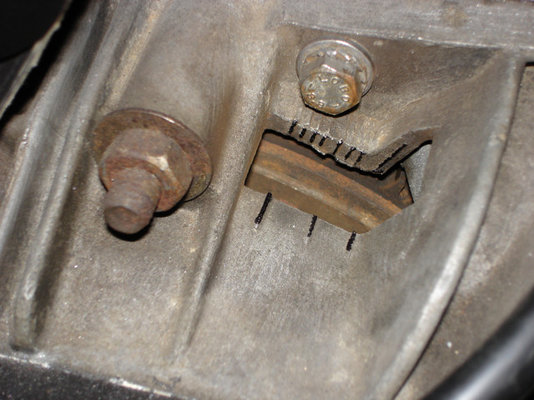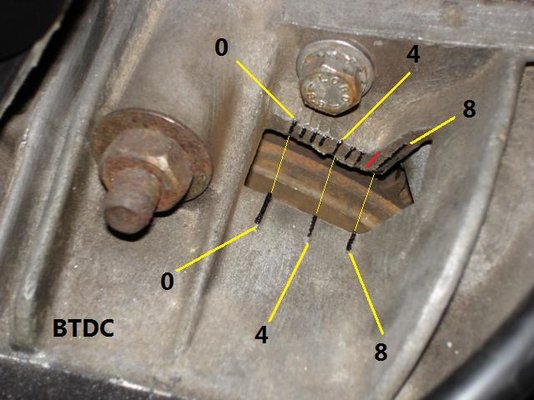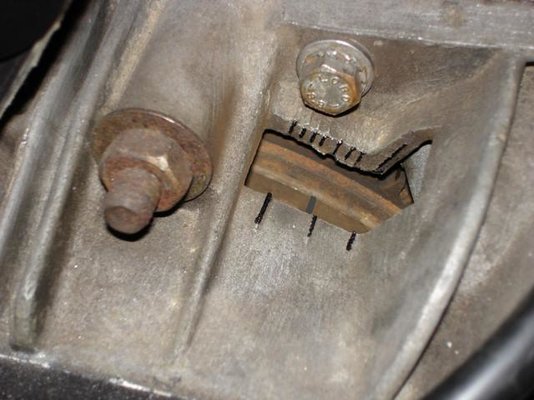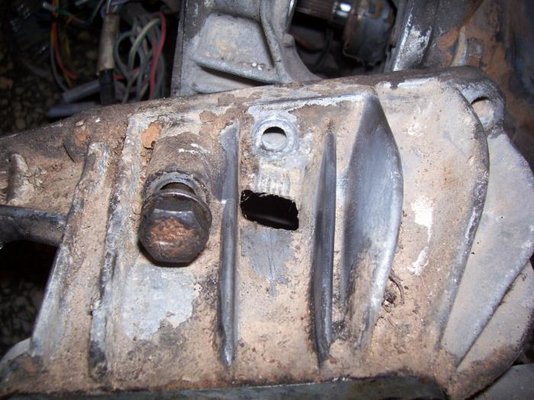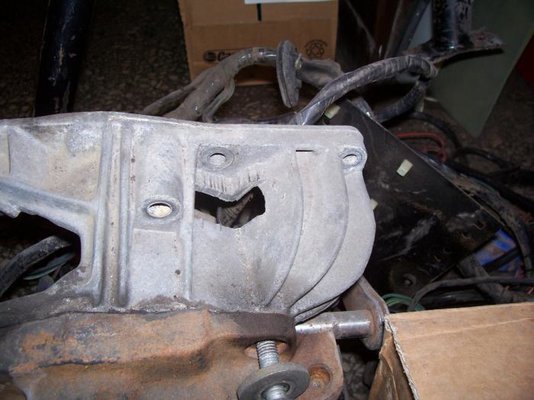DavidN
Enthusiast
- Messages
- 488
Hey experts,
Your help is highly appreciated!
I still have to fiddle out the correct ignition timing on my 1985 1108 F6 engine.
It is the 688-11 / C1E J 718 engine with the low(er) compression rate of 8,3.
This engine is rated 34hp @ 5000 RPM not like the GTL engine that delivers 34HP @ 4000 RPM.
Fitted is a R324C33 FEMSA distributor with matching advance curves.
The ignition timing on this engine seems to be a bit of a mystery.
According to the Haynes Manual it should be 2-4° BTDC.
Other (e.g. the M.R.) states that it has to be 6° +/- 1° BTDC (like the "normal" GTL engines with their high compression).
I'm kind of insecure about these different data. :neutral:
One thing all the different books have in common though - The pictures and figures of the bellhousing and the timing marks are as unclear as can be.
I attached a picture that I took of the bellhousing.
(I marked all the ignition notches I found).
I know the process of setting the timing...
- Disconnect vacuum advance unit
- 700rpm idle speed
- Use a stroboscopic timing light
...
What I dont know is...
- WHERE exactly hast the mark on the flywheel to line up with on MY engine?
- Where is 3 Degrees BTDC
- Where is 6 Degrees BTDC
- What are all these marks for? Is this just one mark per degree?
Thanks for your help!!!
David
Your help is highly appreciated!
I still have to fiddle out the correct ignition timing on my 1985 1108 F6 engine.
It is the 688-11 / C1E J 718 engine with the low(er) compression rate of 8,3.
This engine is rated 34hp @ 5000 RPM not like the GTL engine that delivers 34HP @ 4000 RPM.
Fitted is a R324C33 FEMSA distributor with matching advance curves.
The ignition timing on this engine seems to be a bit of a mystery.
According to the Haynes Manual it should be 2-4° BTDC.
Other (e.g. the M.R.) states that it has to be 6° +/- 1° BTDC (like the "normal" GTL engines with their high compression).
I'm kind of insecure about these different data. :neutral:
One thing all the different books have in common though - The pictures and figures of the bellhousing and the timing marks are as unclear as can be.
I attached a picture that I took of the bellhousing.
(I marked all the ignition notches I found).
I know the process of setting the timing...
- Disconnect vacuum advance unit
- 700rpm idle speed
- Use a stroboscopic timing light
...
What I dont know is...
- WHERE exactly hast the mark on the flywheel to line up with on MY engine?
- Where is 3 Degrees BTDC
- Where is 6 Degrees BTDC
- What are all these marks for? Is this just one mark per degree?
Thanks for your help!!!
David





